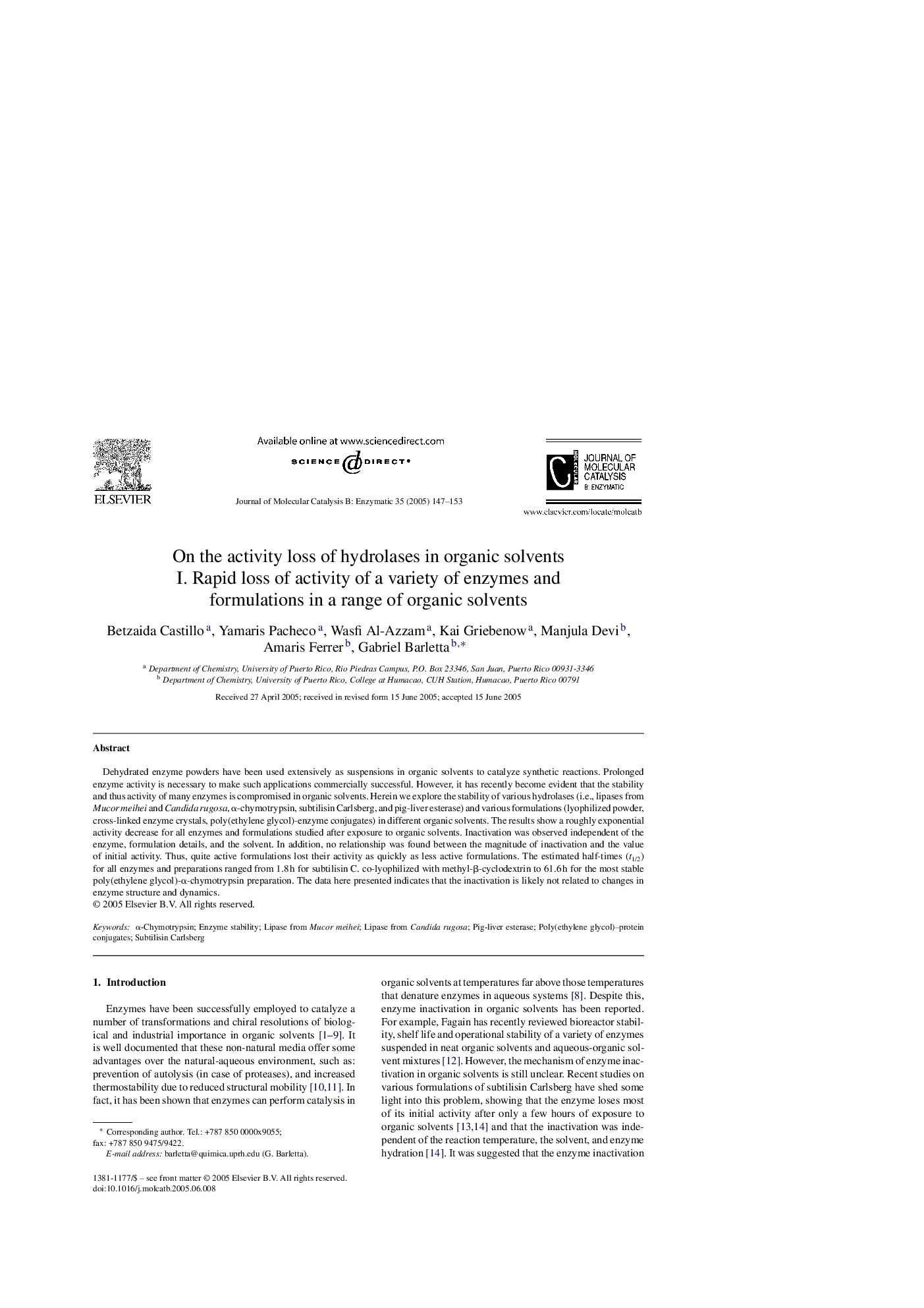| Article ID | Journal | Published Year | Pages | File Type |
|---|---|---|---|---|
| 9616739 | Journal of Molecular Catalysis B: Enzymatic | 2005 | 7 Pages |
Abstract
Dehydrated enzyme powders have been used extensively as suspensions in organic solvents to catalyze synthetic reactions. Prolonged enzyme activity is necessary to make such applications commercially successful. However, it has recently become evident that the stability and thus activity of many enzymes is compromised in organic solvents. Herein we explore the stability of various hydrolases (i.e., lipases from Mucor meihei and Candida rugosa, α-chymotrypsin, subtilisin Carlsberg, and pig-liver esterase) and various formulations (lyophilized powder, cross-linked enzyme crystals, poly(ethylene glycol)-enzyme conjugates) in different organic solvents. The results show a roughly exponential activity decrease for all enzymes and formulations studied after exposure to organic solvents. Inactivation was observed independent of the enzyme, formulation details, and the solvent. In addition, no relationship was found between the magnitude of inactivation and the value of initial activity. Thus, quite active formulations lost their activity as quickly as less active formulations. The estimated half-times (t1/2) for all enzymes and preparations ranged from 1.8 h for subtilisin C. co-lyophilized with methyl-β-cyclodextrin to 61.6 h for the most stable poly(ethylene glycol)-α-chymotrypsin preparation. The data here presented indicates that the inactivation is likely not related to changes in enzyme structure and dynamics.
Related Topics
Physical Sciences and Engineering
Chemical Engineering
Catalysis
Authors
Betzaida Castillo, Yamaris Pacheco, Wasfi Al-Azzam, Kai Griebenow, Manjula Devi, Amaris Ferrer, Gabriel Barletta,
